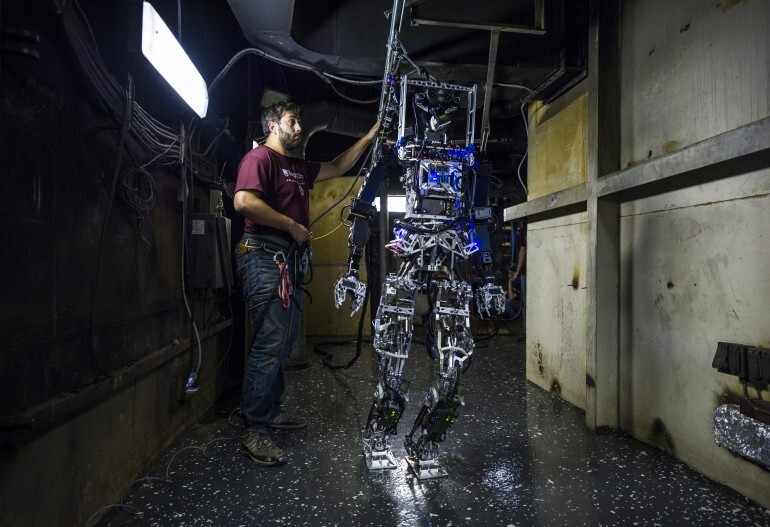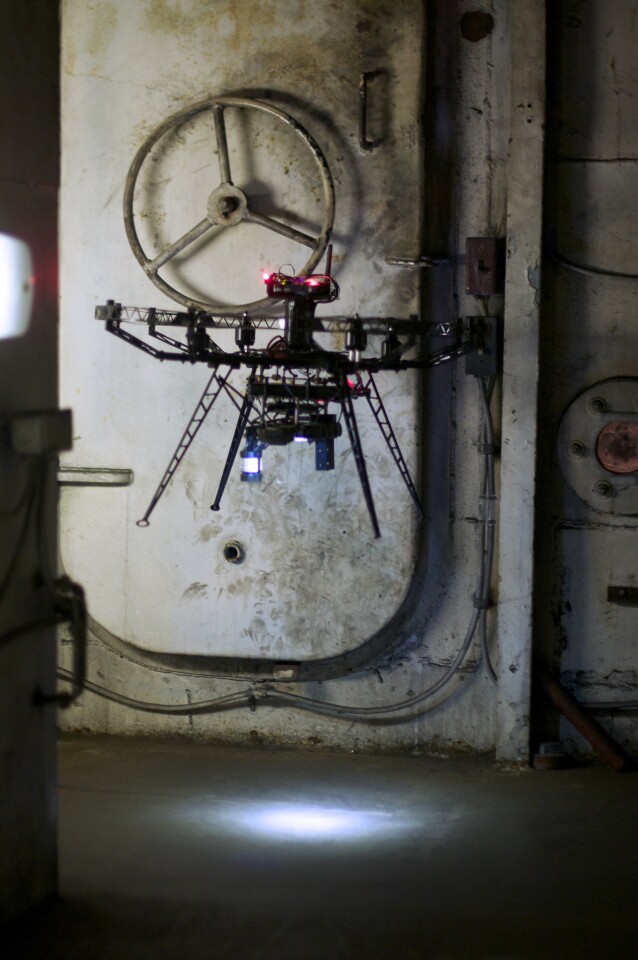This week, the US Office of Naval Research released details regarding a demo of its Shipboard Autonomous Firefighting Robot (SAFFiR) conducted last November. The robot, as its name implies, is designed to help human crews fight fires in the close confines of naval vessels. In order to get to those fires quicker, SAFFiR may ultimately receive some help itself from an autonomous drone, that was also part of the demonstration.
Referred to as a "micro-flyer," the quadcopter was developed by researchers at Carnegie Mellon University’s Robotics Institute and spin-off company Sensible Machines. Both it and the robot are components of the Office of Naval Research's Damage Control Technologies for the 21st Century (DC-21) project.
The idea is that the drone will be released into a ship's potentially dark, smoke-filled hallways in the event of an emergency and will proceed to autonomously fly through the vessel, looking for fires. When it spots one, it will transmit its location to SAFFiR, letting the robot know where to go.

Along with its autonomous control system (it can also be remotely controlled) the micro-flyer additionally features a Kinect-like RGB depth-sensing camera for mapping the locations of fires within the ship; a forward-looking infrared (FLIR) camera for detecting those fires in the first place; and, a downward-facing optical camera for monitoring the aircraft's movements relative to the ship's floor.
In the demo, which took place aboard the decommissioned USS Shadwell in Alabama, the 23-inch (584-mm)-wide drone was able to successfully fit through the ship's 26-inch (660-mm)-wide hatches. In order to make the aircraft so narrow, however, relatively small propellers were used. These reduced its efficiency, which in turn limited its flight time to roughly five minutes per battery charge.

Sensible Machines is addressing this problem with a new aircraft currently in development, in which the four props are replaced by a single ducted fan containing two larger counter-rotating propellers. Once completed, that drone should be just 16 inches (406 mm) wide, with a flight time of 30 minutes.
According to the university, micro-flyers could ultimately also be used for applications such as performing reconnaissance in building fires, or inspecting hazardous chemical tanks and power plant cooling towers.
Footage from the USS Shadwell demo can be seen in the video below.
Source: Carnegie Mellon University






